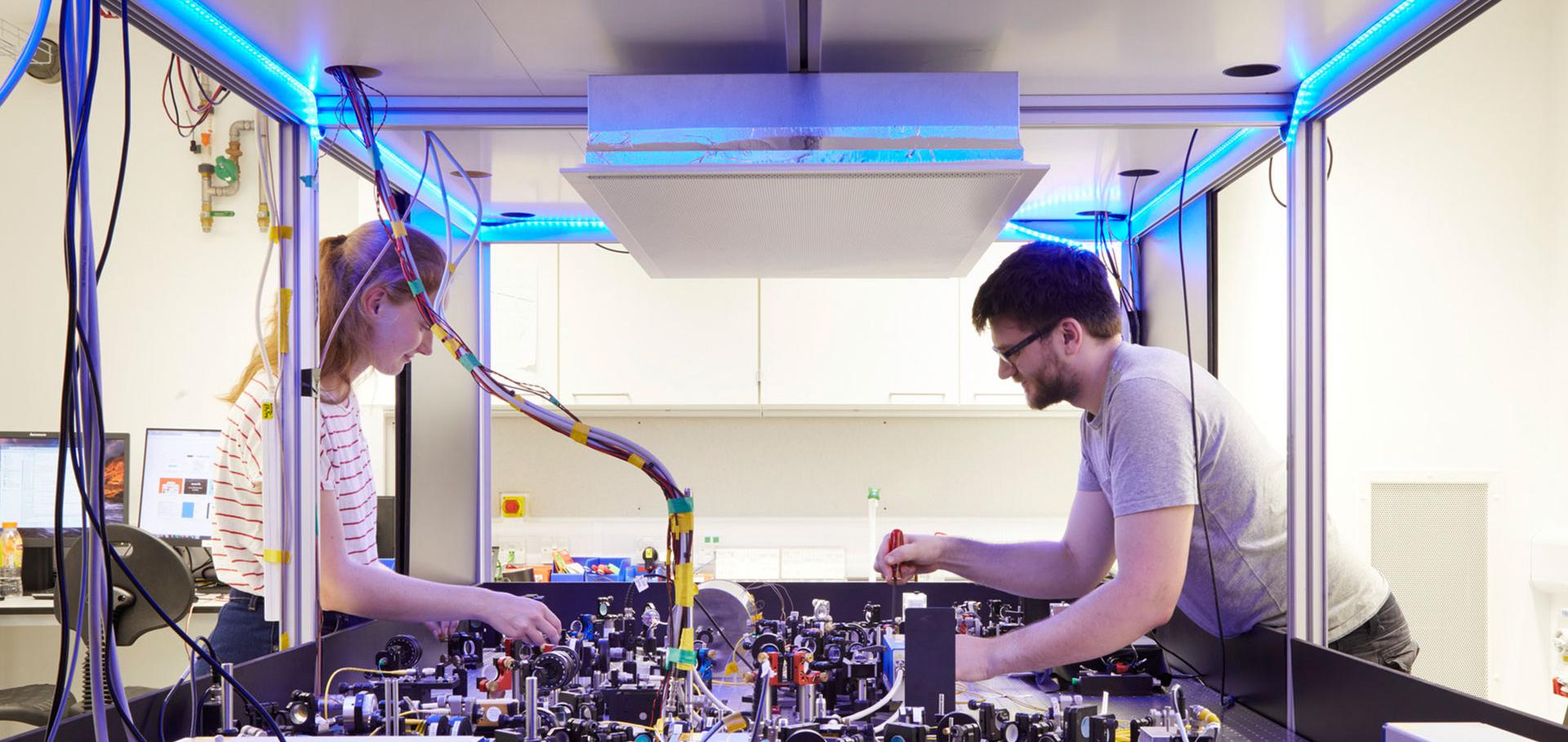Applications of Raman scattering in quantum technologies
AIP Conference Proceedings 1267 (2010) 37-38
Coherent optical memory with GHz bandwidth
Optics InfoBase Conference Papers (2010)
Abstract:
We demonstrate the coherent storage and retrieval of sub-nanosecond low-intensity light pulses with spectral bandwidths exceeding 1 GHz in cesium vapor, using the novel, far off-resonant two-photon Raman memory protocol. © 2010 Optical Society of America.Quantum interference between photo-excited states in a solid-state mott insulator
Optics InfoBase Conference Papers (2010)
Abstract:
By exciting with sub-10-fs 1.6-μm pulses the quasi-one-dimensional Mott insulator ETF2TCNQ, we observe prompt collapse of the Mott gap modulated by 24-THz oscillations of the gap, which are assigned to quantum interference between holon-doublon excitations. © 2010 Optical Society of America.Long-distance entanglement generation in two-dimensional networks
Physical Review A - Atomic, Molecular, and Optical Physics 82:4 (2010)
Abstract:
We consider two-dimensional networks composed of nodes initially linked by two-qubit mixed states. In these networks we develop a global error correction scheme that can generate distance-independent entanglement from arbitrary network geometries using rank-2 states. By using this method and combining it with the concept of percolation, we also show that the generation of long-distance entanglement is possible with rank-3 states. Entanglement percolation and global error correction have different advantages depending on the given situation. To reveal the trade-off between them we consider their application to networks containing pure states. In doing so we find a range of pure-state schemes, each of which has applications in particular circumstances: For instance, we can identify a protocol for creating perfect entanglement between two distant nodes. However, this protocol cannot generate a singlet between any two nodes. In contrast, we can also construct schemes for creating entanglement between any nodes, but the corresponding entanglement fidelity is lower. © 2010 The American Physical Society.Phonon resonances in atomic currents through Bose-Fermi mixtures in optical lattices
Physical Review A 82:4 (2010) 043617


